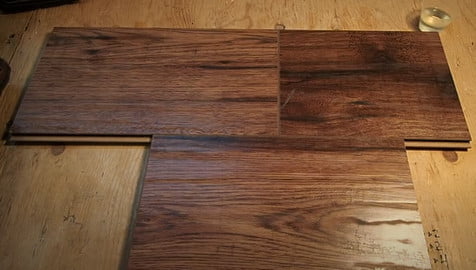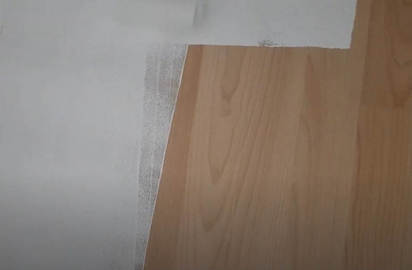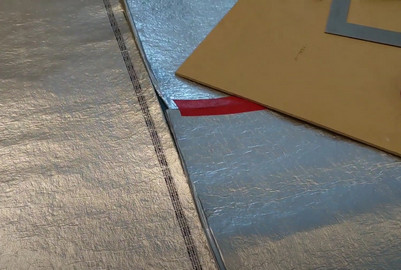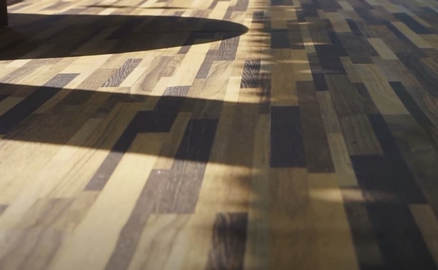How To Get Rid Of Fleas On Laminate Flooring
If you have laminate flooring and a flea infestation, you may be wondering how to effectively get rid of these…
If you have laminate flooring and a flea infestation, you may be wondering how to effectively get rid of these pesky insects.
Fleas are not only a nuisance, but they can also carry diseases and cause allergic reactions in both humans and pets.
Fortunately, there are several methods you can use to eliminate fleas from your laminate flooring and keep them from coming back.
To begin, it’s important to understand the flea life cycle.
Fleas go through four stages: egg, larva, pupa, and adult.
They can lay up to 50 eggs per day and their eggs can hatch within two days.
Once they emerge from their pupal stage, they can live for up to a year.
This means that even if you manage to eliminate adult fleas, there may still be eggs or larvae hiding in your laminate flooring, waiting to hatch and start the cycle all over again.
Understanding the Flea Life Cycle
Let’s dive into understanding how these pesky critters come to be and what we can do to stop them from multiplying! To effectively get rid of fleas on laminate flooring, we need to understand their life cycle.
Fleas go through four distinct stages of development: egg, larva, pupa, and adult. Understanding these stages is crucial in getting rid of them.
Flea eggs can hatch in one to two weeks in a warm and humid environment. The eggs aren’t sticky and can fall off from the pet’s body or from the carpet and flooring. Once they hatch, the flea goes through the larval stage, which lasts for about a week.
During this stage, the flea larvae feed on organic debris, such as skin flakes, pet hair, and flea feces. They avoid light and move towards dark places, like under furniture or in carpet fibers.
After the larval stage is complete, fleas enter the pupal stage. This stage can last for several days to a year depending on the environmental conditions. The flea pupae are sticky and can attach to carpet fibers, furniture, and even pet hair. They are also hard to kill as they are protected by a cocoon-like structure.
Understanding flea development and feeding habits can help us create an effective strategy to get rid of them.
Vacuuming Laminate Flooring for Flea Removal
You can easily eliminate those pesky critters from your home by simply running a vacuum across your sleek, modern floors. While a DIY flea trap may be a more decorative approach to flea removal, vacuuming your laminate flooring is a practical and effective way to get rid of fleas.
This is because fleas can hide in the tiniest of nooks and crannies, and vacuuming can help you reach those hard-to-reach areas. When vacuuming laminate flooring for flea removal, it’s important to use a vacuum with strong suction power and a HEPA filter. This is because fleas and their eggs can easily get trapped in the fibers of your carpet, and a vacuum with a weak suction power will not be able to remove them.
Additionally, a HEPA filter is necessary to prevent any fleas or their eggs from escaping back into your home. You may also consider using a steam cleaning technique after vacuuming, as steam can kill fleas and their eggs. To vacuum your laminate flooring for flea removal, start by thoroughly sweeping the floors with a broom to remove any visible debris.
Next, use the crevice tool and upholstery tool that come with your vacuum to get into tight spaces and corners. Be sure to vacuum under furniture, along baseboards, and any other areas where fleas may be hiding. Once you have finished vacuuming, dispose of the vacuum bag or empty the canister outside to prevent any fleas from making their way back inside your home.
Using Natural Remedies to Repel and Kill Fleas
If you’re looking for a natural and effective way to keep your home flea-free, try incorporating these simple remedies into your routine.
Instead of using harsh chemicals, make your own DIY flea repellent with essential oils. Mix a few drops of peppermint, eucalyptus, and lavender oils with water and spray the solution on your laminate flooring. These oils are natural flea repellents and also leave your floors smelling fresh.
Another natural remedy that can help repel and kill fleas is diatomaceous earth. This fine powder is made from fossilized algae and works by cutting into the flea’s exoskeleton, causing them to dehydrate and die. Sprinkle diatomaceous earth on your laminate flooring and leave it for a few days before vacuuming it up. This will help to kill any fleas and prevent future infestations.
Lastly, consider using a flea-repelling plant like catnip. This herb contains a natural chemical called nepetalactone, which is a potent flea repellent. Simply place a few sprigs of catnip on your laminate flooring or near entryways to keep fleas away. Plus, your cat will love it too!
These natural remedies are not only effective but also eco-friendly and safe for your family and pets.
Keeping Your Home Clean and Pest-Free
Maintaining a clean and pest-free home is crucial to preventing infestations of fleas and other unwanted pests from invading your living space.
One of the first steps you can take is to vacuum regularly. This will not only remove any fleas, but also their eggs and larvae from your laminate flooring. Be sure to vacuum all areas, including under furniture and along baseboards, as fleas tend to hide in these areas.
Choosing the right cleaning products is also important in keeping your home pest-free. Avoid using harsh chemicals that can be harmful to pets and humans, and instead opt for natural and non-toxic solutions. A mixture of equal parts water and vinegar is a great natural cleaner that can help repel fleas.
Additionally, diatomaceous earth, which is a natural powder made from fossilized algae, can be sprinkled on laminate flooring to kill fleas and other pests.
In addition to regular vacuuming and using natural cleaning products, it’s important to also keep clutter to a minimum. This means keeping clothing, towels, and other items off the floor and stored away properly.
Fleas thrive in areas with lots of clutter, so keeping your living space tidy can go a long way in preventing infestations. By following these steps, you can keep your laminate flooring flea-free and maintain a clean and pest-free home.
Seeking Professional Help if Necessary
It may be prudent to seek professional assistance if you are unable to eradicate a flea infestation naturally. Professional exterminators have access to specialized equipment and treatments that are not available to the general public. They can identify the source of the infestation and provide a customized plan to eliminate the fleas from your home.
DIY flea bombs may seem like a cost-effective solution, but they are not always effective. They may only kill adult fleas and leave the eggs and larvae behind to continue the infestation. Additionally, flea bombs can be hazardous to your health if not used properly. A professional exterminator can provide a safer and more effective solution to your flea problem.
If you decide to seek professional help, choose a reputable company that is licensed and insured. Ask for references and read online reviews before making a decision. A good exterminator will provide you with a detailed explanation of their services, including the products they use and the steps they will take to ensure the safety of your family and pets.
With the help of a professional, you can finally rid your home of fleas and enjoy a pest-free environment.
Conclusion
In conclusion, getting rid of fleas on laminate flooring requires a multi-step approach. Understanding the flea life cycle is crucial, as it helps you target the right areas for treatment.
Regular vacuuming is an effective way to remove fleas, their eggs, and larvae from your laminate floors. You can also use natural remedies like essential oils, diatomaceous earth, and vinegar to repel and kill fleas.
However, keeping your home clean and pest-free is the best way to prevent flea infestations from occurring in the first place. Regular cleaning, proper storage of food and garbage, and checking your pets regularly are essential steps to keep fleas at bay.
If your flea problem persists despite your best efforts, seeking professional help is your best option. With the right treatment plan, you can eliminate fleas from your laminate flooring and enjoy a clean and healthy home.





